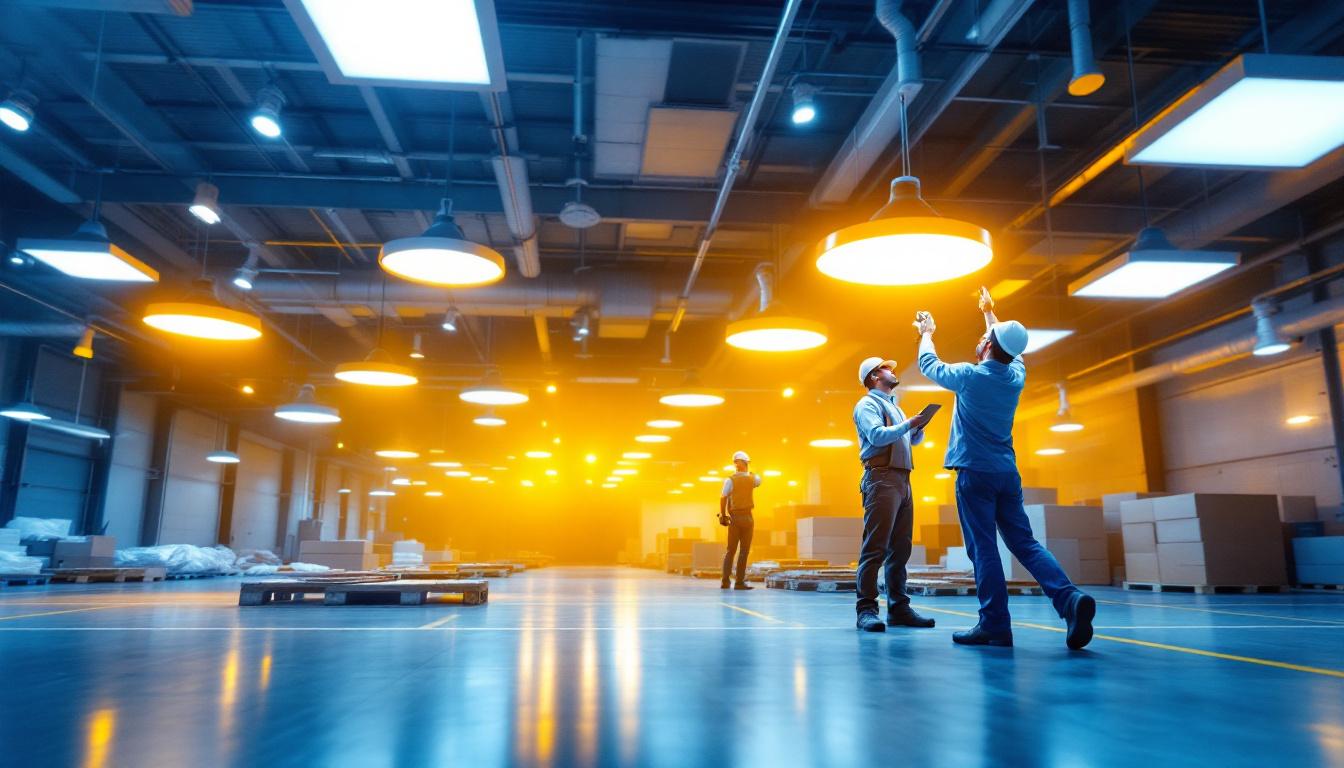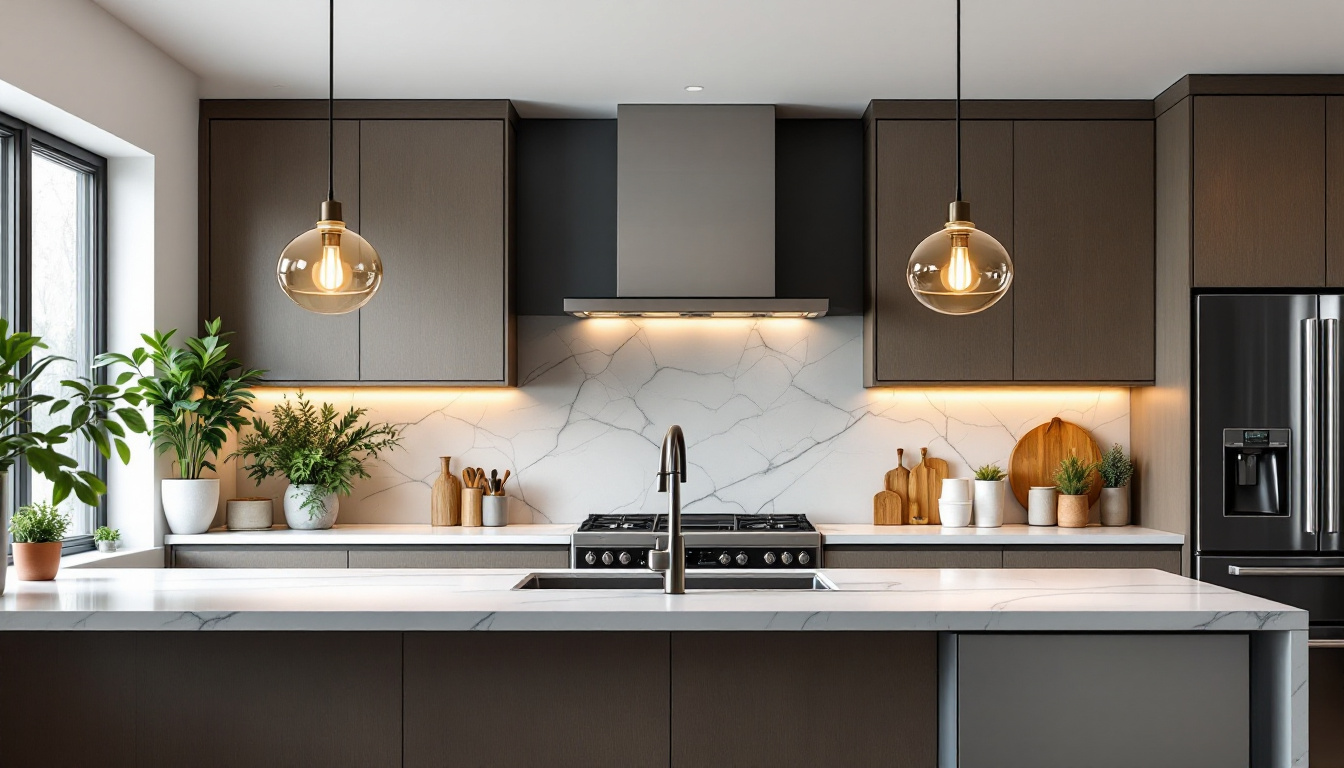
In the ever-evolving world of lighting design, warehouse LED light fixtures have emerged as a game-changer for lighting contractors. These fixtures not only enhance the aesthetic appeal of industrial spaces but also significantly improve energy efficiency and operational effectiveness. As the demand for sustainable and cost-effective solutions grows, understanding the benefits and applications of LED technology becomes crucial for professionals in the field.
The shift from traditional lighting to LED solutions is not merely a trend; it represents a fundamental change in how lighting contractors approach their projects. This article delves into the transformative impact of warehouse LED light fixtures, exploring their benefits, applications, and the future of lighting in industrial environments.
One of the most compelling advantages of LED lighting is its energy efficiency. Unlike traditional incandescent or fluorescent bulbs, LED fixtures consume significantly less power while providing the same or even greater illumination levels. This reduction in energy consumption translates to lower electricity bills, making LED lighting a financially savvy choice for warehouse operators.
Moreover, the longevity of LED fixtures further enhances their cost-effectiveness. With lifespans often exceeding 50,000 hours, these lights require fewer replacements, reducing maintenance costs and minimizing disruptions in warehouse operations. For lighting contractors, recommending LED solutions can lead to satisfied clients and repeat business.
In a warehouse setting, visibility is paramount. Poor lighting can lead to accidents, decreased productivity, and even damage to goods. LED light fixtures provide bright, uniform lighting that minimizes shadows and dark spots, creating a safer working environment. Enhanced visibility not only helps workers navigate the space more effectively but also aids in the accurate handling of inventory.
Additionally, many LED fixtures offer adjustable color temperatures, allowing contractors to tailor the lighting to specific tasks. For instance, cooler light temperatures can enhance focus in areas where precision is critical, while warmer tones may create a more comfortable atmosphere in break rooms and common areas.
As sustainability becomes a priority across industries, the environmental benefits of LED lighting cannot be overlooked. LED fixtures are free from hazardous materials such as mercury, which is commonly found in fluorescent lights. Furthermore, their energy efficiency contributes to a reduction in carbon emissions, aligning with global efforts to combat climate change.
Lighting contractors who advocate for LED solutions not only support their clients in achieving energy savings but also help them fulfill corporate social responsibility goals. This dual benefit can be a strong selling point when discussing project proposals with potential clients.
General warehouse lighting is essential for creating a well-lit environment that promotes safety and efficiency. LED high bay lights are particularly popular in these settings due to their ability to illuminate large spaces with high ceilings. These fixtures can be installed at various heights, ensuring optimal light distribution across the warehouse floor.
For lighting contractors, understanding the layout and specific needs of a warehouse is crucial when recommending high bay LED fixtures. Factors such as ceiling height, the nature of the goods stored, and employee workflow should all influence the lighting design. By providing tailored solutions, contractors can enhance both functionality and aesthetics.
In addition to general lighting, task lighting is vital in areas where precision work is performed. For instance, loading docks, packing stations, and assembly lines require focused lighting to ensure accuracy and safety. LED task lights can be strategically placed to provide the necessary illumination without causing glare or shadows.
Lighting contractors can leverage adjustable LED fixtures that allow for customization based on the specific tasks being performed. This adaptability not only improves worker efficiency but also demonstrates a contractor’s expertise in creating tailored lighting solutions.
Safety regulations mandate that warehouses are equipped with adequate emergency and exit lighting. LED fixtures are ideal for these applications due to their reliability and quick response times. In the event of a power outage, LED emergency lights can provide crucial illumination, guiding employees to safety.
Moreover, the low power consumption of LED lights means that they can operate for extended periods on backup power systems, ensuring that safety measures remain functional even in emergencies. Lighting contractors should emphasize the importance of integrating LED emergency lighting into their designs, not only for compliance but also for the peace of mind it offers to clients.
Selecting the appropriate LED fixtures for a warehouse involves several key considerations. First and foremost, the layout and dimensions of the space will dictate the type of fixtures needed. High bay lights may be suitable for large open areas, while lower-profile fixtures could be ideal for spaces with lower ceilings.
Additionally, the color temperature of the LEDs plays a significant role in creating the desired atmosphere. Cooler temperatures (5000K and above) are often preferred for task-oriented areas, while warmer temperatures (3000K to 4000K) may be more suitable for break rooms and lounges. Lighting contractors should take the time to discuss these preferences with their clients to ensure satisfaction with the final outcome.
Not all LED fixtures are created equal. When selecting products, contractors should prioritize quality and ensure that the fixtures meet industry standards and certifications. Look for products with Energy Star ratings or certifications from reputable organizations that guarantee performance and safety.
Investing in high-quality LED fixtures not only enhances the overall lighting design but also reduces the likelihood of issues such as flickering or premature failure. This focus on quality can lead to long-term client relationships and a reputation for excellence in the field.
While the initial investment in LED lighting may be higher than traditional options, the long-term savings are undeniable. Lighting contractors should conduct a thorough cost analysis to present clients with a comprehensive view of the financial benefits. This analysis should include energy savings, reduced maintenance costs, and the potential for rebates or incentives for using energy-efficient lighting.
By providing clear and transparent cost comparisons, contractors can help clients understand the value of investing in LED technology. This approach not only fosters trust but also positions contractors as knowledgeable professionals who prioritize their clients’ best interests.
Proper installation of LED fixtures is essential to maximize their performance and lifespan. Lighting contractors should follow manufacturer guidelines and industry best practices to ensure that fixtures are installed correctly and safely. This includes considering factors such as fixture placement, wiring, and compatibility with existing systems.
Additionally, training staff on the specifics of LED technology can enhance installation efficiency. Understanding the unique characteristics of LED fixtures, such as their heat dissipation needs and dimming capabilities, can lead to better installation outcomes and fewer issues down the line.
While LED fixtures require less maintenance than traditional lighting options, periodic checks are still necessary to ensure optimal performance. Lighting contractors should recommend routine inspections to identify any potential issues, such as loose connections or accumulated dust on lenses that could impact light output.
Educating clients on the importance of maintenance can help extend the lifespan of LED fixtures and ensure that they continue to perform at their best. Providing clients with a maintenance schedule or checklist can further enhance the contractor-client relationship and demonstrate a commitment to quality service.
The future of warehouse lighting is increasingly intertwined with smart technology. The integration of IoT (Internet of Things) devices into lighting systems allows for enhanced control and automation. Lighting contractors can offer clients solutions that enable remote monitoring, dimming, and scheduling of lights based on occupancy or time of day.
Smart lighting not only contributes to energy savings but also provides valuable data on usage patterns and maintenance needs. This data-driven approach can help warehouse operators optimize their lighting strategies and make informed decisions about future upgrades or changes.
As LED technology continues to advance, lighting contractors must stay informed about the latest innovations. New developments in efficiency, color rendering, and design are constantly emerging, providing opportunities for contractors to offer cutting-edge solutions to their clients.
By keeping abreast of industry trends and advancements, contractors can position themselves as leaders in the field, capable of delivering the most effective and modern lighting solutions available. This commitment to innovation not only benefits clients but also enhances the contractor’s reputation and marketability.
Warehouse LED light fixtures are revolutionizing the way lighting contractors work, offering numerous benefits that extend beyond mere illumination. From energy efficiency and improved safety to enhanced visibility and environmental sustainability, the advantages of LED technology are clear.
As the demand for sophisticated and efficient lighting solutions continues to grow, lighting contractors who embrace LED technology will find themselves at the forefront of the industry. By understanding the applications, benefits, and future trends of LED lighting, contractors can provide exceptional service to their clients and contribute to a more sustainable future.
In a world where energy conservation and safety are paramount, the role of lighting contractors is more critical than ever. By harnessing the power of warehouse LED light fixtures, they can transform industrial spaces and create environments that are not only functional but also conducive to productivity and well-being.
Ready to elevate your lighting projects with the most efficient and sustainable warehouse LED fixtures? At LumenWholesale, we provide lighting contractors with the highest quality, spec-grade lighting products at unbeatable wholesale prices. Say goodbye to local distributor markups and hello to superior lighting solutions that meet the highest industry standards. Plus, enjoy the convenience of bulk buying with free shipping and no hidden fees. Transform your industrial spaces with confidence and cost-effectiveness. Discover wholesale lighting at the best value and make the smart switch to LumenWholesale today.

Discover the frequent pitfalls lighting contractors encounter when installing kitchen hanging lights.

Discover the frequent pitfalls lighting contractors face with Bulb T8 installations.

Discover the essential guide to LED tape light dimmers tailored for lighting contractors.

Discover why compact fluorescent light ballasts are essential for lighting contractors.